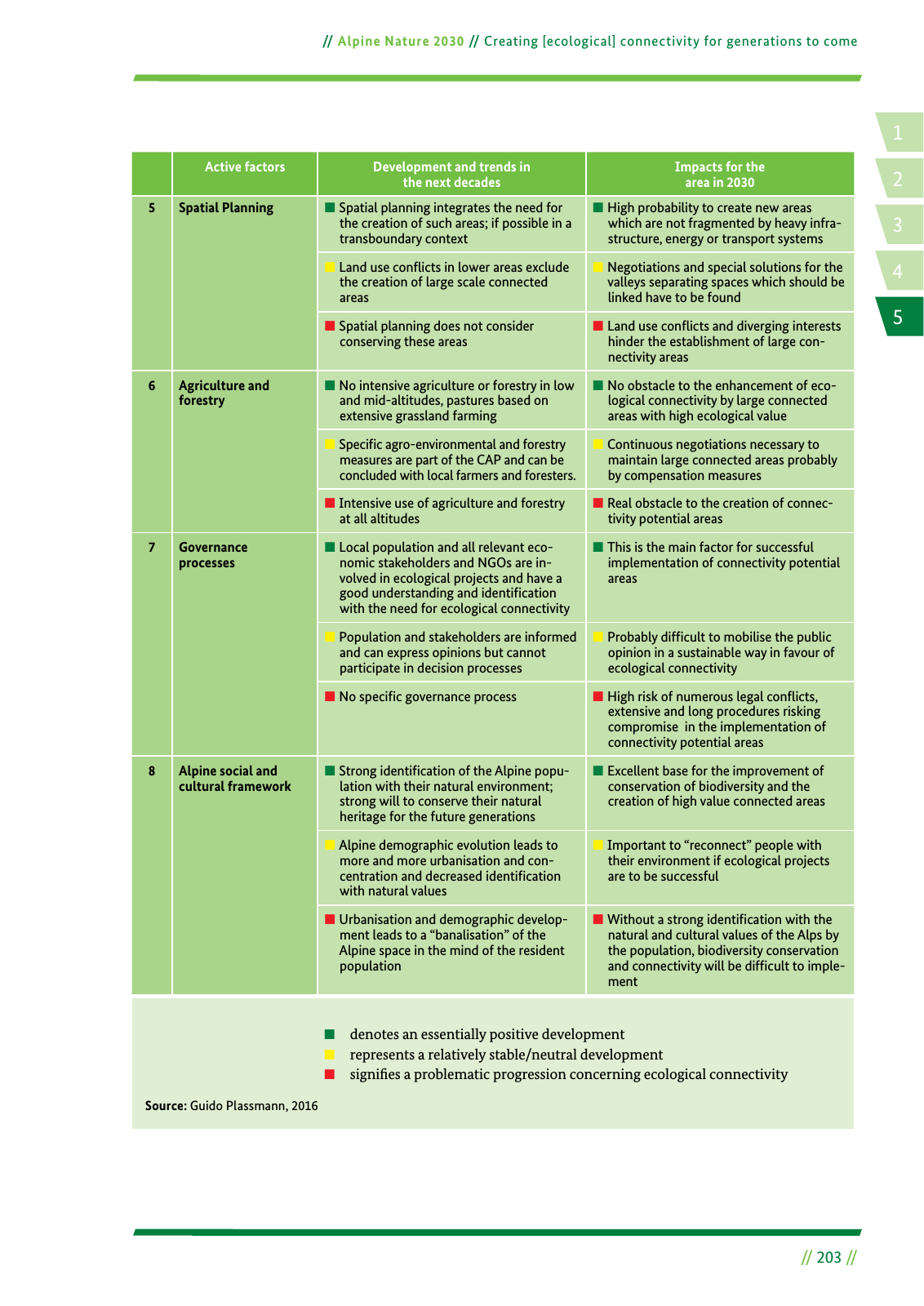14 2 5 3 Alpine Nature 2030 Creating ecological connectivity for generations to come 203 5 Spatial Planning ó Spatial planning integrates the need for the creation of such areas if possible in a transboundary context ó High probability to create new areas which are not fragmented by heavy infra structure energy or transport systems ó Land use con icts in lower areas exclude the creation of large scale connected areas ó Negotiations and special solutions for the valleys separating spaces which should be linked have to be found ó Spatial planning does not consider conserving these areas ó Land use con icts and diverging interests hinder the establishment of large con nectivity areas 6 Agriculture and forestry ó No intensive agriculture or forestry in low and mid altitudes pastures based on extensive grassland farming ó No obstacle to the enhancement of eco logical connectivity by large connected areas with high ecological value ó Speci c agro environmental and forestry measures are part of the CAP and can be concluded with local farmers and foresters ó Continuous negotiations necessary to maintain large connected areas probably by compensation measures ó Intensive use of agriculture and forestry at all altitudes ó Real obstacle to the creation of connec tivity potential areas 7 Governance processes ó Local population and all relevant eco nomic stakeholders and NGOs are in volved in ecological projects and have a good understanding and identi cation with the need for ecological connectivity ó This is the main factor for successful implementation of connectivity potential areas ó Population and stakeholders are informed and can express opinions but cannot participate in decision processes ó Probably dif cult to mobilise the public opinion in a sustainable way in favour of ecological connectivity ó No speci c governance process ó High risk of numerous legal con icts extensive and long procedures risking compromise in the implementation of connectivity potential areas 8 Alpine social and cultural framework ó Strong identi cation of the Alpine popu lation with their natural environment strong will to conserve their natural heritage for the future generations ó Excellent base for the improvement of conservation of biodiversity and the creation of high value connected areas ó Alpine demographic evolution leads to more and more urbanisation and con centration and decreased identi cation with natural values ó Important to reconnect people with their environment if ecological projects are to be successful ó Urbanisation and demographic develop ment leads to a banalisation of the Alpine space in the mind of the resident population ó Without a strong identi cation with the natural and cultural values of the Alps by the population biodiversity conservation and connectivity will be dif cult to imple ment Active factors Development and trends in the next decades Impacts for the area in 2030 ó denotes an essentially positive development ó represents a relatively stable neutral development ó signi es a problematic progression concerning ecological connectivity Source Guido Plassmann 2016

Hinweis: Dies ist eine maschinenlesbare No-Flash Ansicht.
Klicken Sie hier um zur Online-Version zu gelangen.
Klicken Sie hier um zur Online-Version zu gelangen.